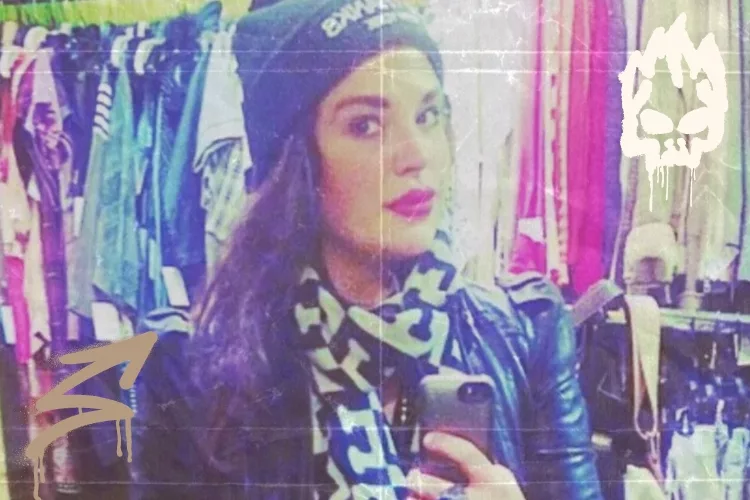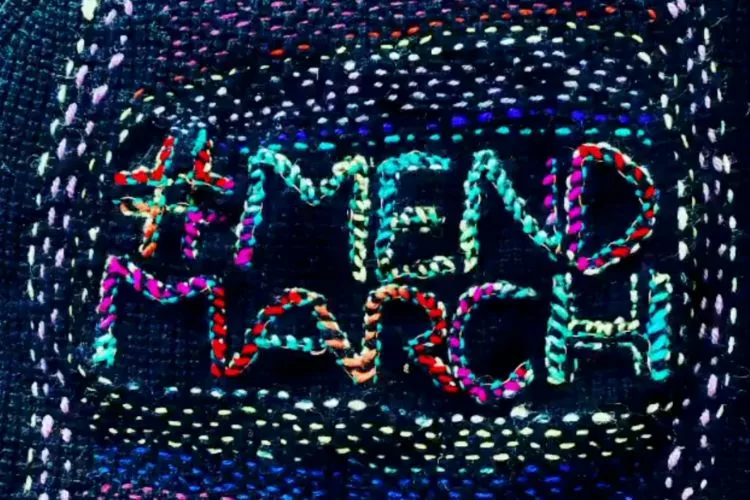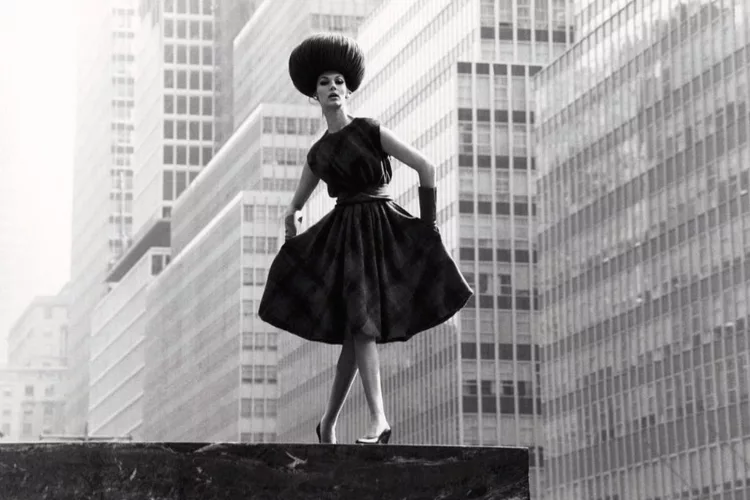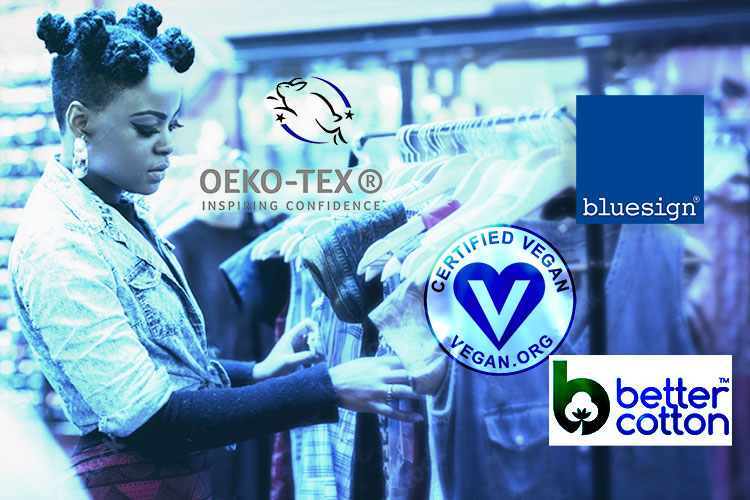–by Katya Moorman
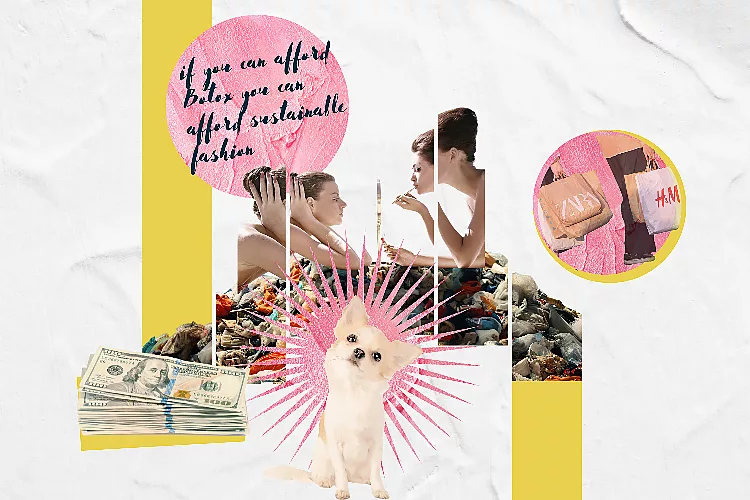
When I talk to someone about the problems within the current fashion industry, it doesn’t seem to matter what I say. I could ask them to think about how it’s possible for anyone to make a profit on a $8 t-shirt. (Obviously, there has to be exploitation somewhere.) Or I can mention the toxicity of our clothing –how they’re loaded with endocrine-disrupting chemicals. Or how a garbage truck worth of textile waste is literally landfilled every second.
The person will appear to be avidly listening, eyes wide, nodding along with the stats, and ready to jump in and agree that it’s “so terrible.”
But there is a shift when I bring up solutions that include changing how we shop. They unconsciously look away or tilt their head like my dog when he’s trying to understand his human, and there’s a little tension while I wait for it.
Wait for it…
And here it is…
“Oh, I can’t afford sustainable fashion.”
Cue cartoon me banging my head against the wall.
Because talking about giving up our fast fashion fix has an interesting side effect. Suddenly, college-educated women with good jobs are rushing to explain the sociological importance of fast fashion.
This is when I hear about how if we lose fast fashion, we are depriving people of the option to be trendy and fashionable. That “my privilege is showing” to suggest we must change. I never hear anyone rushing to insist that less advantaged women get better childcare or healthcare.
What I want to say in response is:
Enough already! Stop using the inclusivity card because you don’t want to abandon your fast fashion and over-consumption habits. If you can afford Botox, you can afford to shop more responsibly. (Yes, I said it.)
The point is that we all rationalize our choices on where/how we spend our money, and the fashion industry is a master marketing manipulator. It has sold us the line that it is too confusing and too expensive to shop better. Because it knows that if we collectively changed our ways, they could no longer do business as usual, and the fat profit that comes from exploitation would fly out the window.
It’s time to challenge this idea and emphasize that, in most cases, embracing sustainable fashion is Possible with a shift in perspective and approach –here’s how.
First, Understand The True Cost of Our Current System of Overproduction and Over-Consumption
The low prices of fashion don’t accurately reflect the actual cost. The environmental and social impacts are profound –from pollution to poor working conditions. By buying better, we support responsible production, fair wages, and a healthier planet.
Buy Less, Choose Well, Make It Last
Vivienne Westwood said it first, and who am I to argue? In the age of fashion hauls, we are all about quantity over quality. This needs a serious rethink. Start valuing your clothes. Better garments are typically designed to last longer due to higher-quality materials and craftsmanship. While the initial cost may be higher, the longevity and durability of responsibly created pieces ultimately save money in the long run, considering the reduced need for replacements.
Explore Secondhand and Thrifting Options
Shopping better is not limited to purchasing new, high-priced items. Thrift stores, consignment shops, vintage and online platforms offer an abundance of pre-loved fashion at a fraction of the cost.
Support Affordable and Ethical Indie Brands
The fashion landscape has evolved, with an increasing number of brands prioritizing both ethics and affordability. Many of these brands offer reasonably priced options, especially during sales or clearance periods. By researching and choosing these brands, you can find garments that align with your values and budget.
DIY and Upcycling
Another approach involves getting creative and repurposing existing clothing items. DIY projects and upcycling transform old or worn-out garments into personalized pieces. Not only does this approach save money, but it also reduces waste.
Replace Retail Therapy
Overproduction of garments is a critical problem in ALL of fashion –not just what is considered fast fashion. And this environmental nightmare will only stop when we buy less. Did you buy the idea that shopping cures what ails you? Let’s return that and instead revisit what we already own. Johann Hari said, “The opposite of addiction is connection.” With that in mind, connect with a friend instead of a shopping fix. Consider helping one another style what you already own and document your “new” outfits.
Educate and Advocate
You don’t need to be a “sustainable fashion blogger” to be a better shopper. This should not be an insidery #IYKYK kind of thing.
Sharing your own process can foster a collective shift toward conscious consumerism. Encouraging friends, family, and communities to explore better options can create a ripple effect, ultimately making “sustainability” more accessible.
*I find the terms ‘fast fashion’ and ‘sustainable fashion’ both problematic. I think all massively mass-produced fashion has the same problems as ‘fast fashion’ but on a lesser scale. ‘Sustainable fashion’ has been hijacked by advertisers and marketing, so while we’re struggling to find a new term, just know I mean fashion that doesn’t harm people or the planet. I’ll use “planet positive’ and ‘responsible’ but ultimately I’m aligned with Tara St. James when she said,
I would love there to be no label for any kind of sustainability, and for sustainability to just be the status quo in the industry. And then any fast fashion, or otherwise toxic fashion brand, would have to have a label like this. This is toxic fashion. This is labor violation fashion.
And when it’s explained like that, who can argue?
Related Articles


